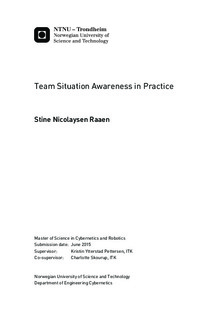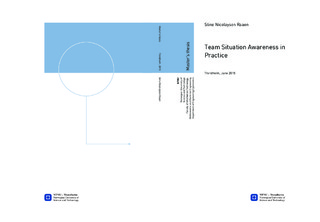| dc.description.abstract | To work in a team of operators in a control room can be both stressful and \newline challenging. When a situation occurs that needs interaction, the basic \newline understanding of the current situation ought to be equal for all involved parties - even though that may not be the case. Making a decision based on different premises can cause critical consequences and even end up in catastrophic \newline outcomes. A high degree of common understanding in the team, a high team situation awareness, is therefore important in a team.
There are several factors influencing the teams situation awareness, one of them is how the information is presented. The aim of this thesis was to perform an \newline evaluation of different solutions for large information visualisation displays in \newline control rooms with respect to how they support team situation awareness.
After performing a literature review on situation awareness and other relevant factors, the current situation in control rooms had to be investigated. This was done by observations and interviews with control room operators and people with knowledge on this theme.
Based on brief technology analysis and input collected from interviews it seemed that
the main focus in order to increase the situation awareness should be a good training program. The training program should focus on why things happen and what really happens in the process, not just how to fix the problem. After a high awareness is gained, informative and readily understood interfaces should be designed on the best suited information presentation solution. As for now, the best solution, with respect to the ability to support situation awareness, is the large screen displays. This is because this solution provides the operators with an appropriate amount of information. The two other solutions investigated, GIGA-maps and 360 degree displays, might be more beneficial in the case of training the operators.
The applicability of these above mentioned technologies is still open for question and current topic of investigation by the human factors community in Norway. | |

